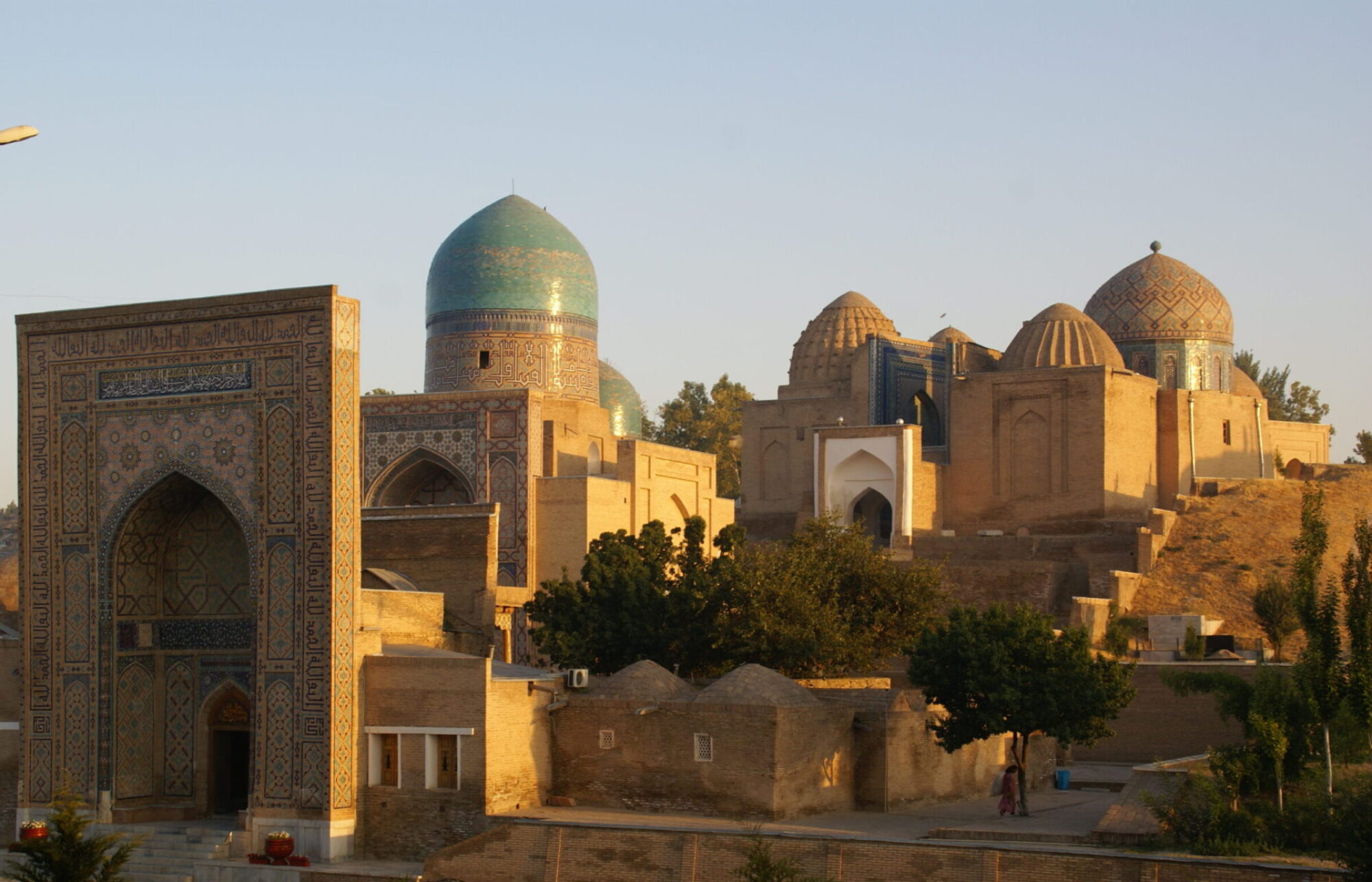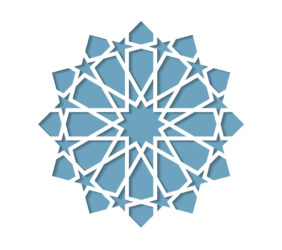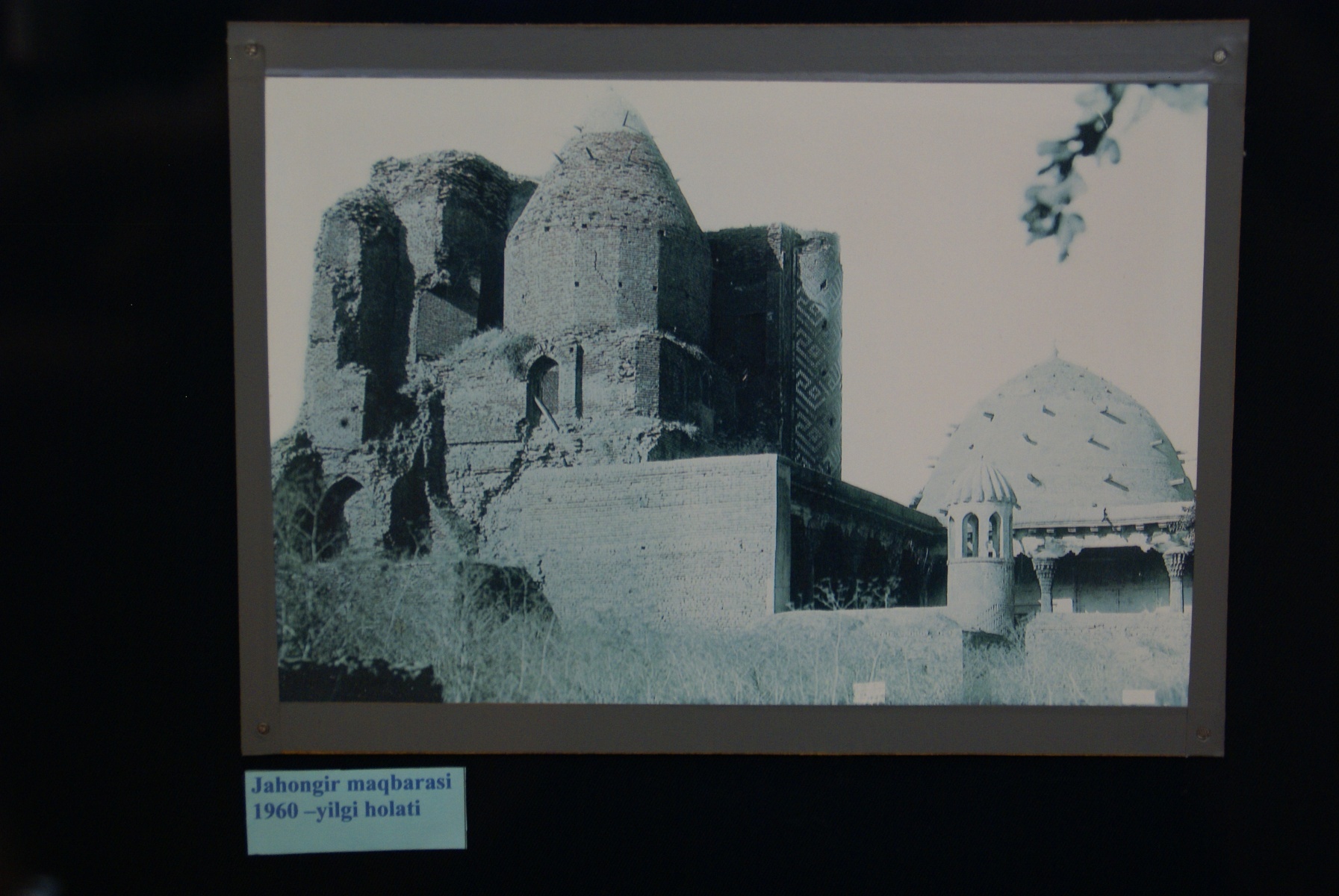The Aq Saray (White Palace, 1379-1396) was the most monumental structure erected by Timur in his lifetime. The ‘white’ colour reflected in the name may refer to the aristocratic nature of the compound and not necessarily to its colour, after all, the whole portal is covered in blue tile revetments. Although the construction started in 1379 after Timur’s campaign in Khwarezm, according to the existing inscriptions, the revetments were built in 1395-1396. In the 16th century the Shaybanid ruler ‘Abdallah Khan systematically demolished the Timurid monuments in Shahr-i Sabz and the Aq Saray may have been destroyed in one of his campaigns. That is why, we cannot be certain about the actual plan of the building, its scale and potential date of completion.
The only remaining structure is the massive entrance portal to the north with a vault of 22 m. It is composed of two nested iwans (monumental gates) flanked by enormous pylons with round towers resting on engaged twelve-sided shafts. Several craftsmen from different parts of Central Asia worked on the palace portal. On a moulded cable decorated with delicate tile mosaic, the name of Muhammad ibn Yusuf al-Tabrizi is recorded. According to other sources, Timur deployed many masters from Urgench (Khwarezm) to Shahr-i Sabz. The palette and many of the vegetal and arabesque designs can be found in mid-14th century illuminations and textiles. Large areas of the side towers and the adjoining arches are covered in brick mosaic with huge geometric patterns in light and dark blue spelling the names of Allah, Muhammad and ‘Ali in square Kufic script.


